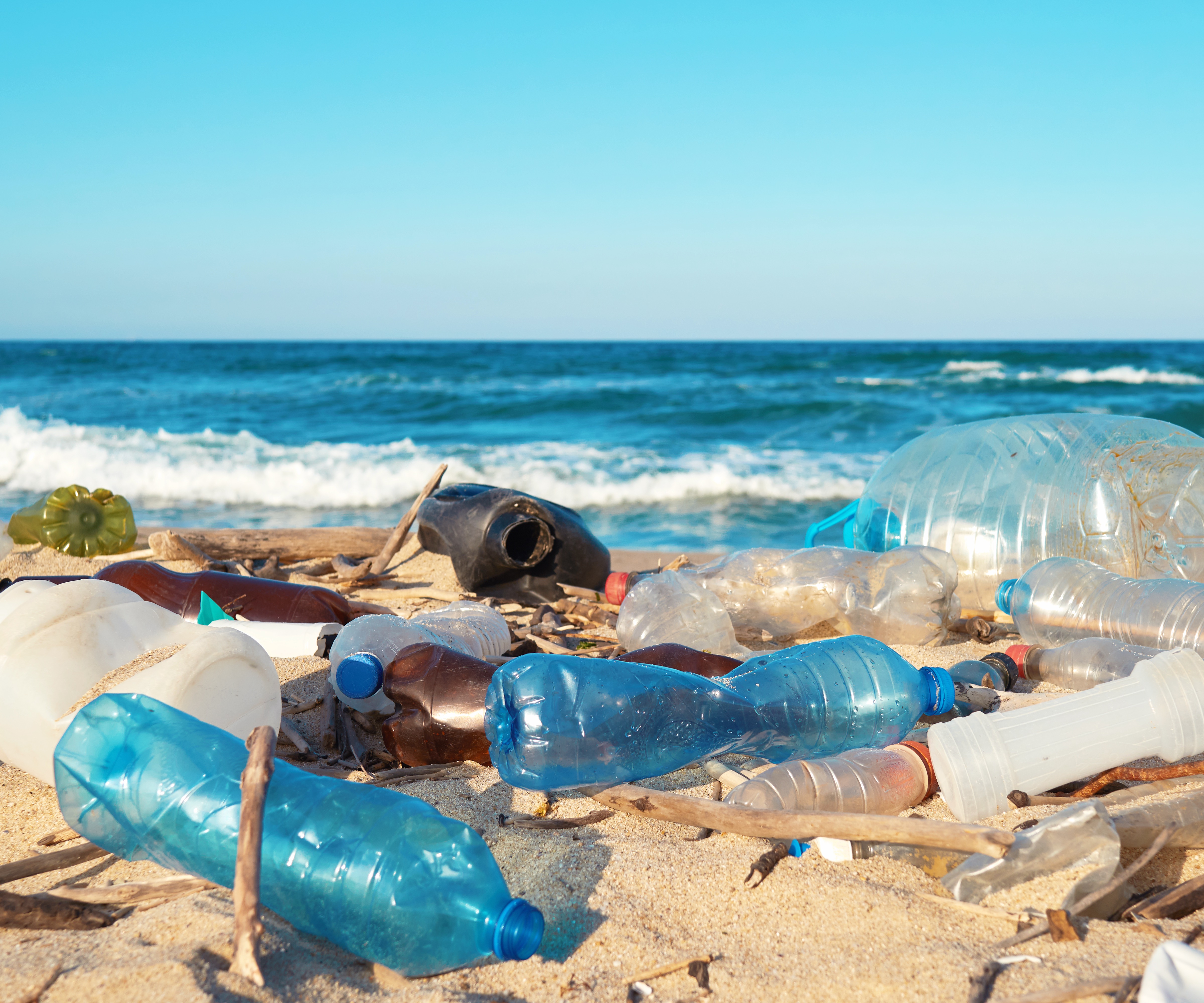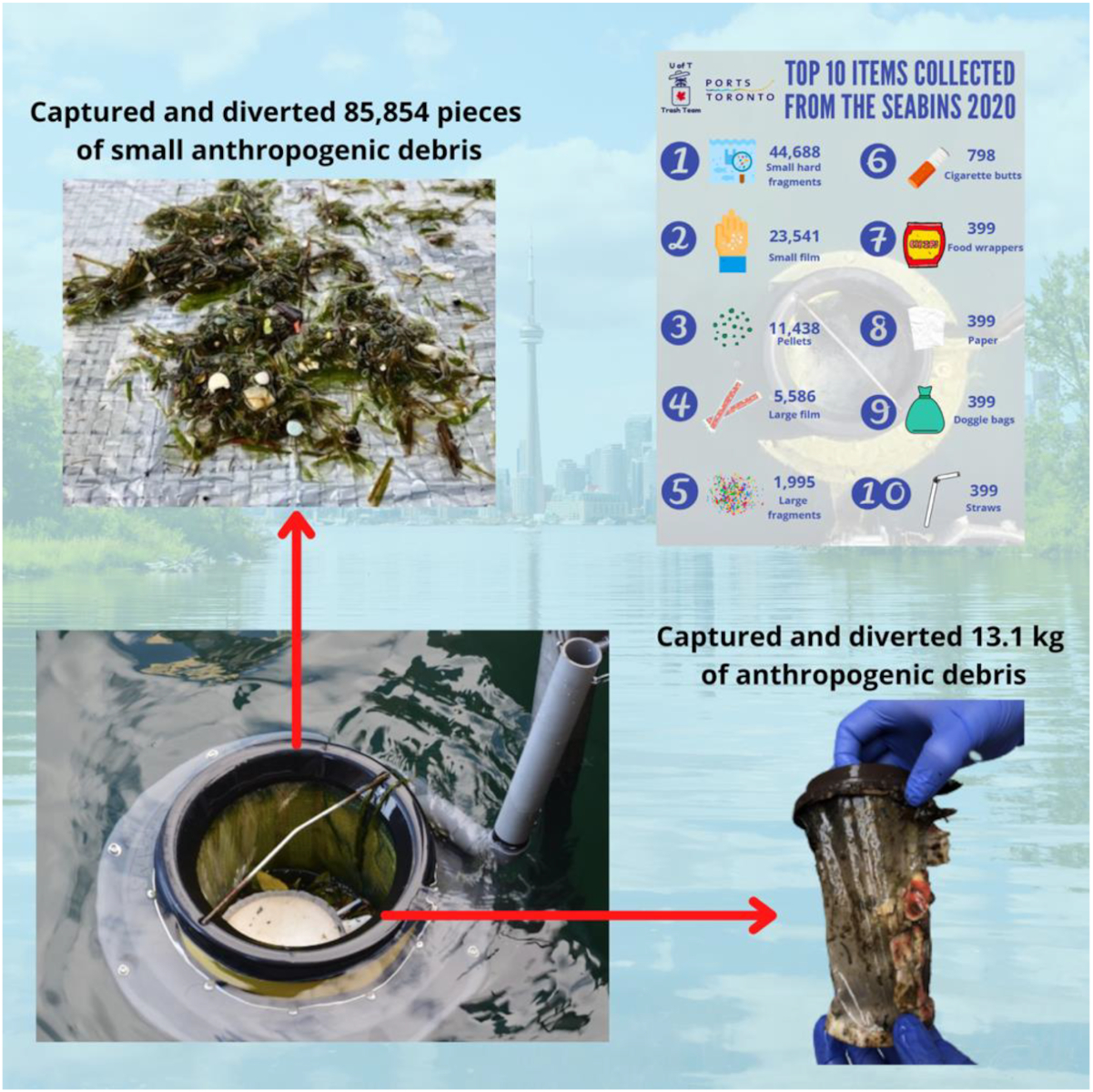Abstract
Trash capture devices (TCDs) are a rapidly evolving tool for municipal governments, non-governmental organizations, and industries to divert litter from our waterways. Here, we introduce protocols to initiate trash trapping projects to quantify and characterize captured anthropogenic litter based on a case study using Seabins. In addition, we have introduced a network for global data collection via TCDs. Our first protocol is a visual audit of the potential site to inform the type and location for TCD deployment. Our next two protocols quantify and characterize the litter captured by TCDs: (1) a simple protocol intended for daily monitoring and (2) a detailed protocol to characterize and quantify all large debris (>3 cm) and a subset of the small debris (2 mm–3 cm) caught in the devices. Using Seabins in the Toronto Harbour to test our methodology, we found that our subsampling methodology has a 6.9% error rate. Over a 19-week period, the Seabins captured ∼85 000 pieces of small debris. Our study highlights the utility of TCDs and proposes methods to realize this utility globally. TCDs should become more widespread and utilized as a triple threat: a cleanup tool, a data collection tool, and a platform for outreach and education.
Graphical Abstract
Introduction
Globally, all plastic ever produced is equivalent to twice the overall mass of terrestrial and marine animals combined (Elhacham et al. 2020). Due to the lack of well-designed management strategies for plastics, much of it ends up as pollution, where researchers have estimated 19–23 million metric tons (mt) of plastic waste entered aquatic ecosystems in 2016 alone, and if we continue “business as usual” this number may triple or quadruple by 2030 (Borelle et al. 2020). Plastics have been reported globally in oceans, rivers, lakes, soils, and the atmosphere (Barnes et al. 2009; Eriksen et al. 2013; Wright et al. 2013; Corcoran et al. 2015; Gall and Thompson 2015; Allen et al. 2019; Emmerik and Schwarz 2019; Wang et al. 2020). With such widespread contamination and evidence of negative impacts (Bucci et al. 2020; Everaert et al. 2020), it begs the need for widespread solutions.
Due to the complex problems that plastic pollution poses to our environment, societies, and economies, many diverse solutions have been proposed across all sectors. Some examples are reducing plastic production, improvements in waste management, a transition to a circular economy, the invention of substitutions (e.g., biodegradable packaging), and cleanups (Gontard and Gulibert 1994; Borelle et al. 2017; Garcia et al. 2019). There is no one-size-fits-all solution, and Borelle et al. (2020) demonstrate the need for several solutions in parallel. Although cleanups should be a last resort and upstream solutions prioritized, it is essential at present while leakage and contamination remain high.
There are many different types of cleanups; the most common is a volunteer-based manual cleanup. In 2019, more than 9 million kg (0.009 mt) of anthropogenic debris was recovered globally by volunteers from the International Coastal Cleanup (ICC; Ocean Conservancy 2020). Although this is an enormous effort, it is a small number compared to the millions of tonnes of plastic waste entering aquatic ecosystems annually (Jambeck and Johnsen 2015; Borrelle et al. 2020). This suggests a need to supplement volunteer efforts with other proposed solutions such as the implementation of specialized technologies—e.g., trash capture devices (TCDs).
The benefit of TCDs is that they can clean 7 days a week, 24 h per day. They typically capture litter that has already entered the aquatic environment and can also effectively capture small particles, diverting these materials from aquatic ecosystems. Still, there is concern regarding their efficiency as well as their potential to negatively impact ecosystems through the accidental collection of biota (Falk-Andersson et al. 2020; Leone et al. 2022). Researchers have suggested methods that can be used to conduct cost-benefit analyses to determine how the positive impact of removing plastic debris compare to any negative impact to an ecosystem (Falk-Andersson et al. 2020; Leone et al. 2022). Using these methods, along with other information and proposed methods to assist stakeholders in choosing a type of device and location for deployment (Schmaltz et al. 2020; Helinski et al. 2021), effective and safe trash-capturing programs can be implemented. Today, TCDs are mobilized in different parts of the world to either (1) prevent anthropogenic debris from entering our waterways through capture upstream (e.g., storm drain technologies) or (2) capture debris after it enters marine or freshwater ecosystems (e.g., river collectors) (Schmaltz et al. 2020).
In addition to diverting plastic pollution from the environment, TCDs can also collect data to measure positive impact and inform preventative policies upstream. TCDs can also be utilized as a centrepiece for outreach and education regarding plastic and microplastic pollution. A TCD developed and deployed in Baltimore, Mr Trash Wheel, is a great example of successful removal of plastic debris, data collection, and increasing waste literacy through education and outreach. The success of Mr Trash Wheel inspired us to learn more about TCDs and see whether we could scale up cleanup efforts, data collection, and waste literacy globally through a harmonized global network of TCDs.
Here, we begin our work in the Toronto Harbour using Seabins as a case study to (1) develop methodology to inform the most appropriate type of TCDs and the most effective location where TCDs should be deployed (“Tracking Trash”) and (2) deploy TCDs to develop a methodology that could be globally harmonized for quantifying and characterizing anthropogenic debris trapped by TCDs to measure positive impact and inform policies upstream (“Trapping Trash”). Ultimately, this work was completed to improve our own TCD programming with local stakeholders and to develop the International Trash Trap Network.



